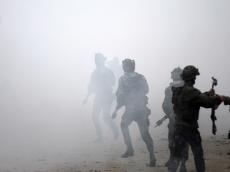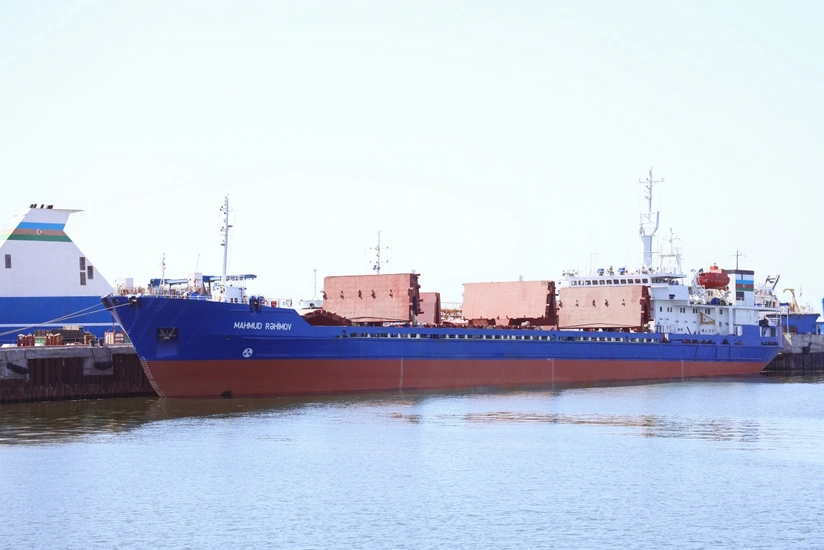|
|
TODAY.AZ / Politics
Armenia continues provocations on frontline
27 February 2017 [15:33] - TODAY.AZ
 By Azernews
By Azernews
By Rashid Shirinov
On the background of increasing social protests in public, Armenia's government uses the bloody Nagorno-Karabakh conflict to prolong its life in power.
High tension on the frontline with the Azerbaijani troops helps the current regime to shift the public attention from internal problems to the grave situation on the conflict zone. This tactics turns out the favorite of Serzh Sargsyan's government, which basically includes people taking an active part in the occupation of 20 percent of internationally recognized territory of neighboring Azerbaijan.
Over the last few days, the Armenian Armed Forces have intensified their provocations and sabotages against Azerbaijan on the frontline.
If a week ago the Armenian side breached ceasefire on average 30-40 times a day, now the number of these provocations has increased fourfold to 130. The Armenian army uses mortars of various caliber, sniper rifles and large-caliber machine guns during ceasefire breaching.
Back in February 21, Azerbaijani Armed Forces prevented an act of sabotage by Armenia on the frontline. Azerbaijani army identified the actions of the Armenian side and carried out pre-emptive strikes on the Armenian positions. The enemy, suffering heavy losses, was forced to retreat.
On February 23, the Azerbaijani army detected another Armenian sabotage group trying to carry out provocation near the Talish and Gulustan villages. As a result of immediate measures, Azerbaijani Armed Forces forced the enemy to retreat.
Further, at midnight on February 25, the armed forces of Armenia attempted to penetrate into the positions of the Azerbaijani Armed Forces. The Armenian armed group aimed to conduct large-scale provocation on the frontline and to seize advantageous positions in Khojavand-Fizuli direction of the frontline. After heavy battles between the Azerbaijani and Armenian troops, the Armenian attacks were prevented. Unfortunately, Azerbaijan had casualties during the battles.
It is noteworthy that this provocation of Armenia took place on the eve of the Khojaly genocide committed against the people of Azerbaijan 25 years ago. After the provocation, the Co-Chairs of the OSCE Minsk Group released a statement expressing their concern over the escalation of violence on the line of contact.
However, on February 27, the Azerbaijani Defense Ministry disseminated another statement saying that the Armenian Armed Forces once again tried to commit provocation on the frontline, in the direction of Talish village. The enemy suffered losses and was again forced to retreat.
It is likely that Armenia will continue to take action in order to escalate the situation along the entire frontline.
Political analyst Arzu Nagiyev believes that the tension at the frontline is primarily connected with the parliamentary elections in Armenia scheduled for April 2.
He says that the Nagorno-Karabakh conflict is the trump card in the hands of the Armenian ruling party, and therefore, Armenia always aggravates the situation in the conflict zone on the eve of important political events in Armenia.
“The unresolved conflict and the status quo play into the hands of the leadership of Armenia. In this way, it keeps the power of the Karabakh clan and the rule of Serzh Sargsyan for a longer period,” Nagiyev said.
Obviously, Armenia provides all the military and political provocations against Azerbaijan in order to prevent substantive negotiations on the settlement of the Nagorno-Karabakh conflict.
More than two decades have passed since the signing of the ceasefire agreement between the Armenian and Azerbaijani sides in 1994. For all these years, the Nagorno-Karabakh conflict has been supposed to find a solution by peaceful means. However, the OSCE Minsk Group, which tries to resolve the conflict, still has not managed to make considerable progress.
The fault for this lies on the Armenian side, which always neglects and shows disregard to the negotiation process. The status quo in Nagorno Karabakh fully satisfies the Armenian leadership, which is afraid of being overthrown if Armenia comes to the negotiating table to resolve the long-lasting conflict.
The conflict between the two South Caucasus countries began in 1988 when Armenia made territorial claims against Azerbaijan. As a result of the ensuing war, in 1992 Armenian armed forces occupied 20 percent of Azerbaijan, including the Nagorno-Karabakh region and seven surrounding districts. More than 20,000 Azerbaijanis were killed and over 1 million were displaced as a result of the large-scale hostilities.
Armenia still controls fifth part of Azerbaijan's territory and rejects implementing four UN Security Council resolutions on withdrawal of its armed forces from the Nagorno-Karabakh and surrounding districts.
URL: http://www.today.az/news/politics/159009.html
 Print version
Print version
Connect with us. Get latest news and updates.
See Also
- 13 September 2025 [18:00]
Azerbaijan’s Defense Minister Zakir Hasanov condoles Pakistan over deadly terror attack - 12 September 2025 [01:33]
Evidence of shelling, civilian killings, and hostage-taking presented in court - 11 September 2025 [12:36]
National Assembly backs Washington declaration, bolstering Azerbaijan’s global role - 11 September 2025 [12:12]
And you will be cured! Mikhalkov as a crazy "lightning rod" of Russian propaganda - 11 September 2025 [12:01]
Remains of four fallen soldiers from First Garabagh War to be laid to rest - 11 September 2025 [11:11]
US Congress refused to consider anti-Azerbaijani amendments - the failure of the Armenian lobby in Washington - 11 September 2025 [10:42]
Uzbekistan, Azerbaijan agree to strengthen inter-parliamentary cooperation - 10 September 2025 [14:26]
President Ilham Aliyev attends opening of Samad Vurgun Creativity House of the Writers’ Union - 10 September 2025 [14:00]
Armenian revanchists have found new savior of the nation - 10 September 2025 [10:00]
Hikmet Hajiyev meets U.S. lawmakers to discuss strategic ties
Most Popular
 Evidence of shelling, civilian killings, and hostage-taking presented in court
Evidence of shelling, civilian killings, and hostage-taking presented in court
 TOGG debuts T10F in Munich, marking entry into Europe’s EV market
TOGG debuts T10F in Munich, marking entry into Europe’s EV market
 China develops world's first brain-like AI
China develops world's first brain-like AI
 Final day of “Baku Water Week” kicks off with strong participation
Final day of “Baku Water Week” kicks off with strong participation
 Samsung SDS expands AI service offerings for enterprise clients
Samsung SDS expands AI service offerings for enterprise clients
 ASCO’s “Mahmud R?himov” sets sail to Aktau after major overhaul
ASCO’s “Mahmud R?himov” sets sail to Aktau after major overhaul
 Calligraphy meets justice in Kayseri as festival exhibition draws art lovers
Calligraphy meets justice in Kayseri as festival exhibition draws art lovers
